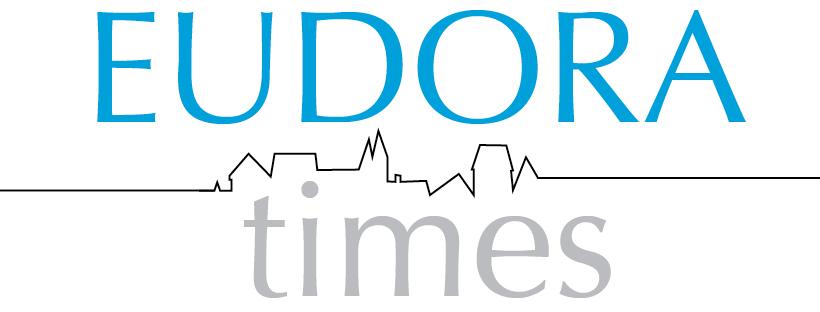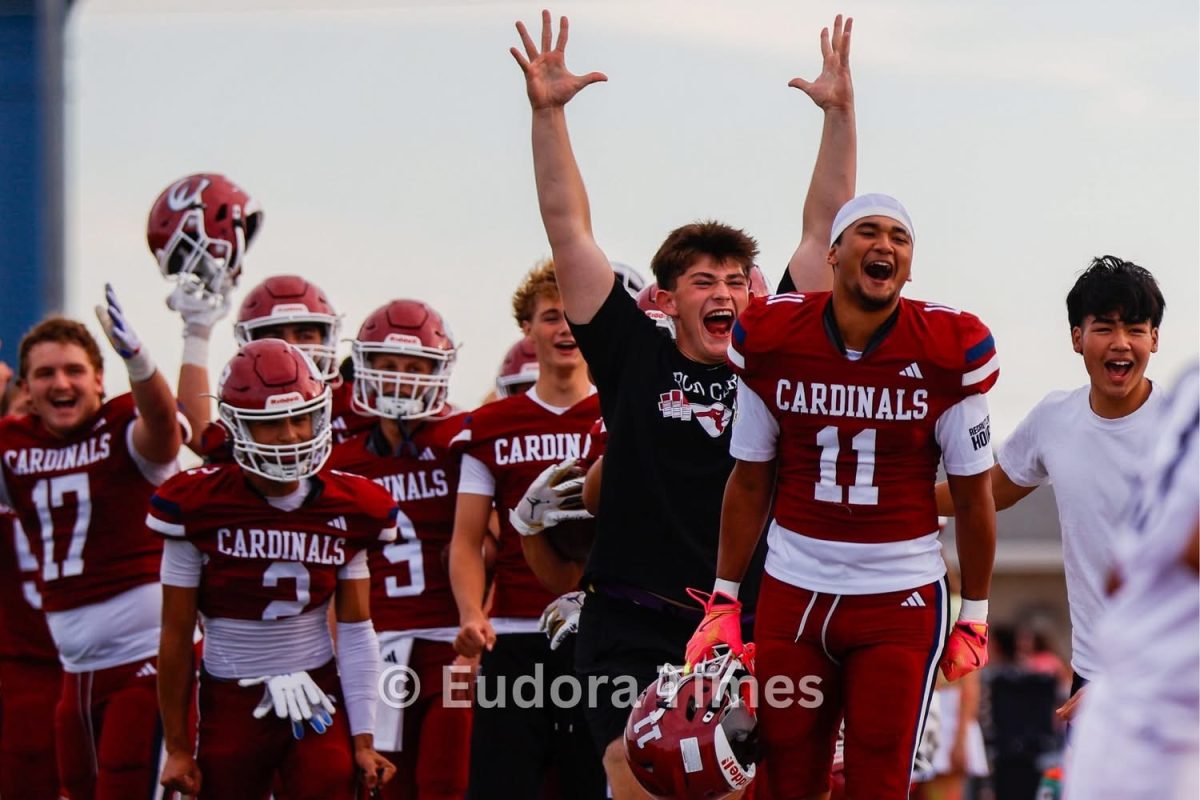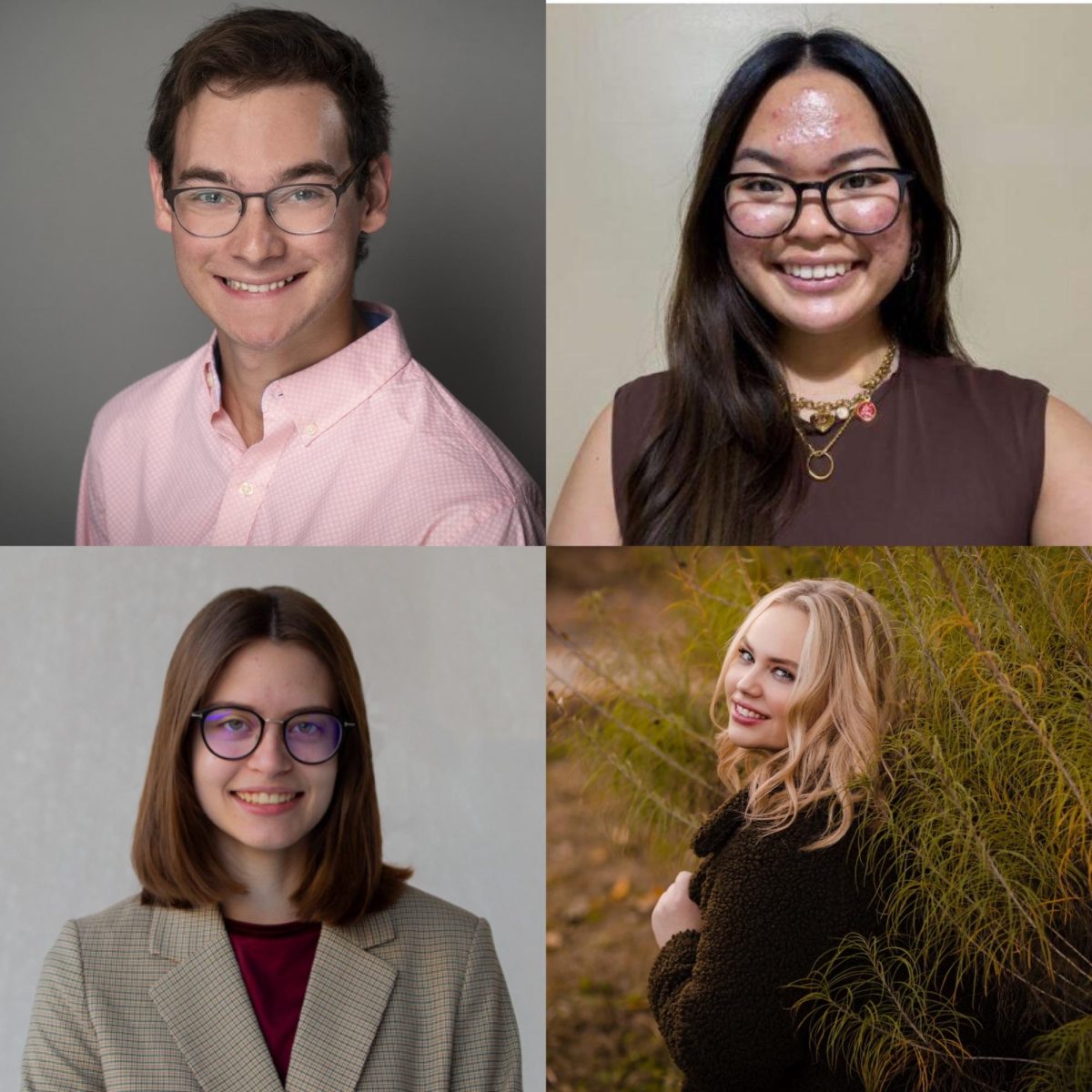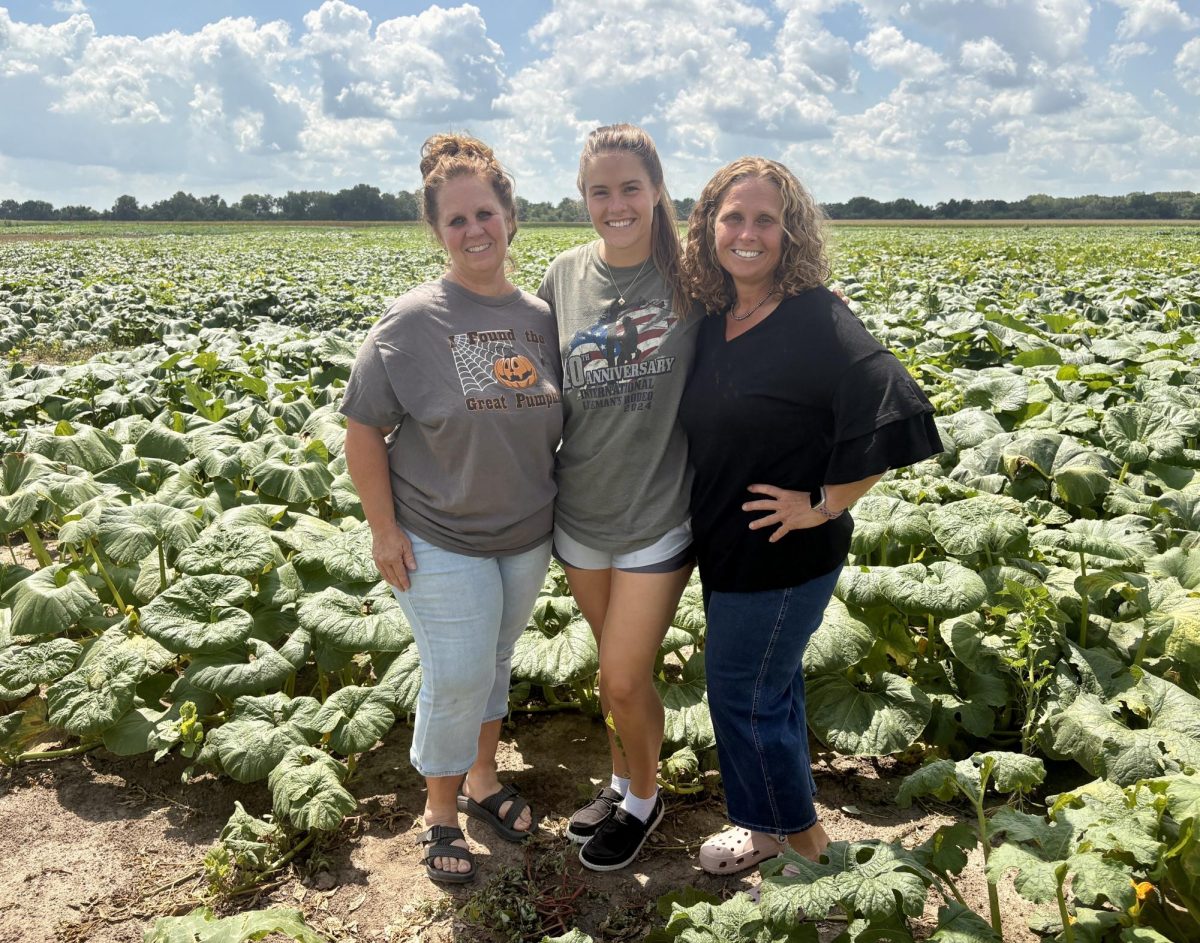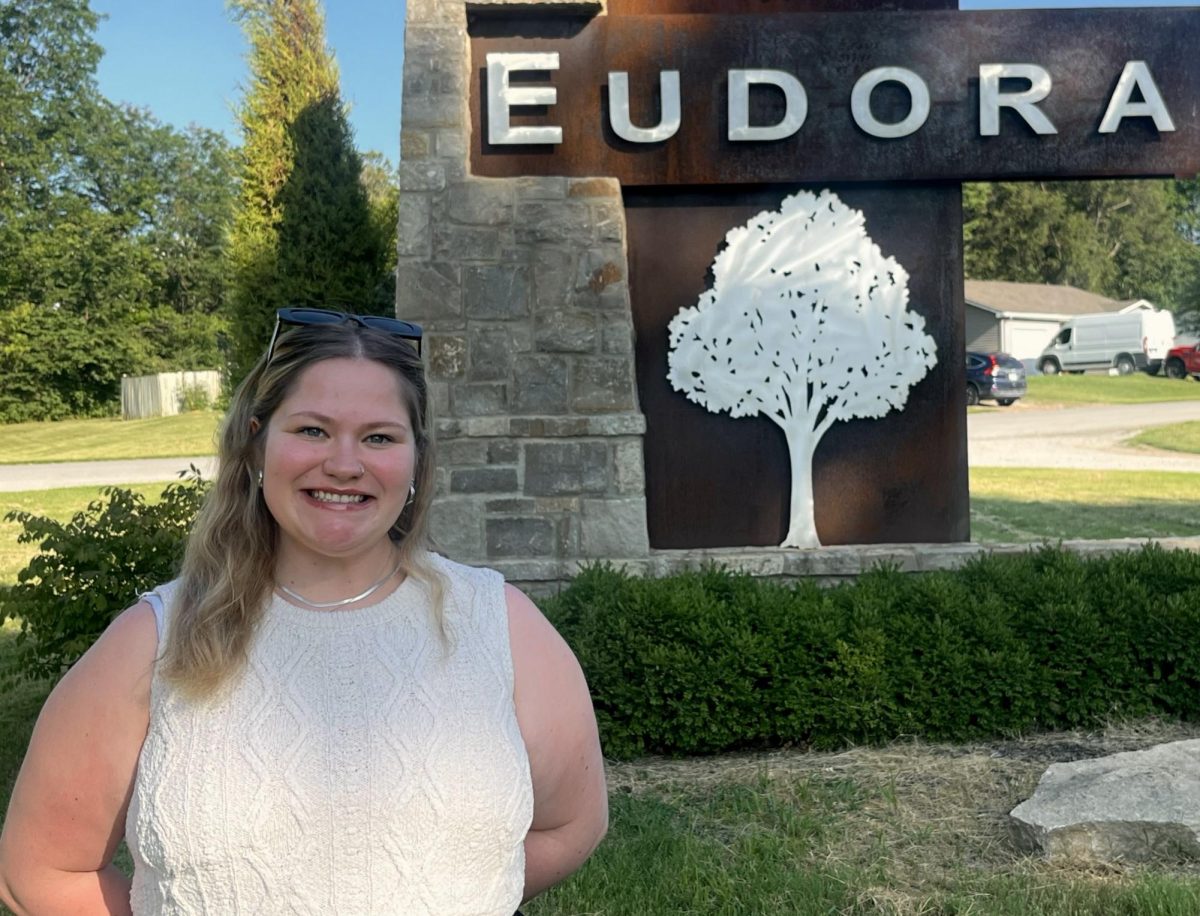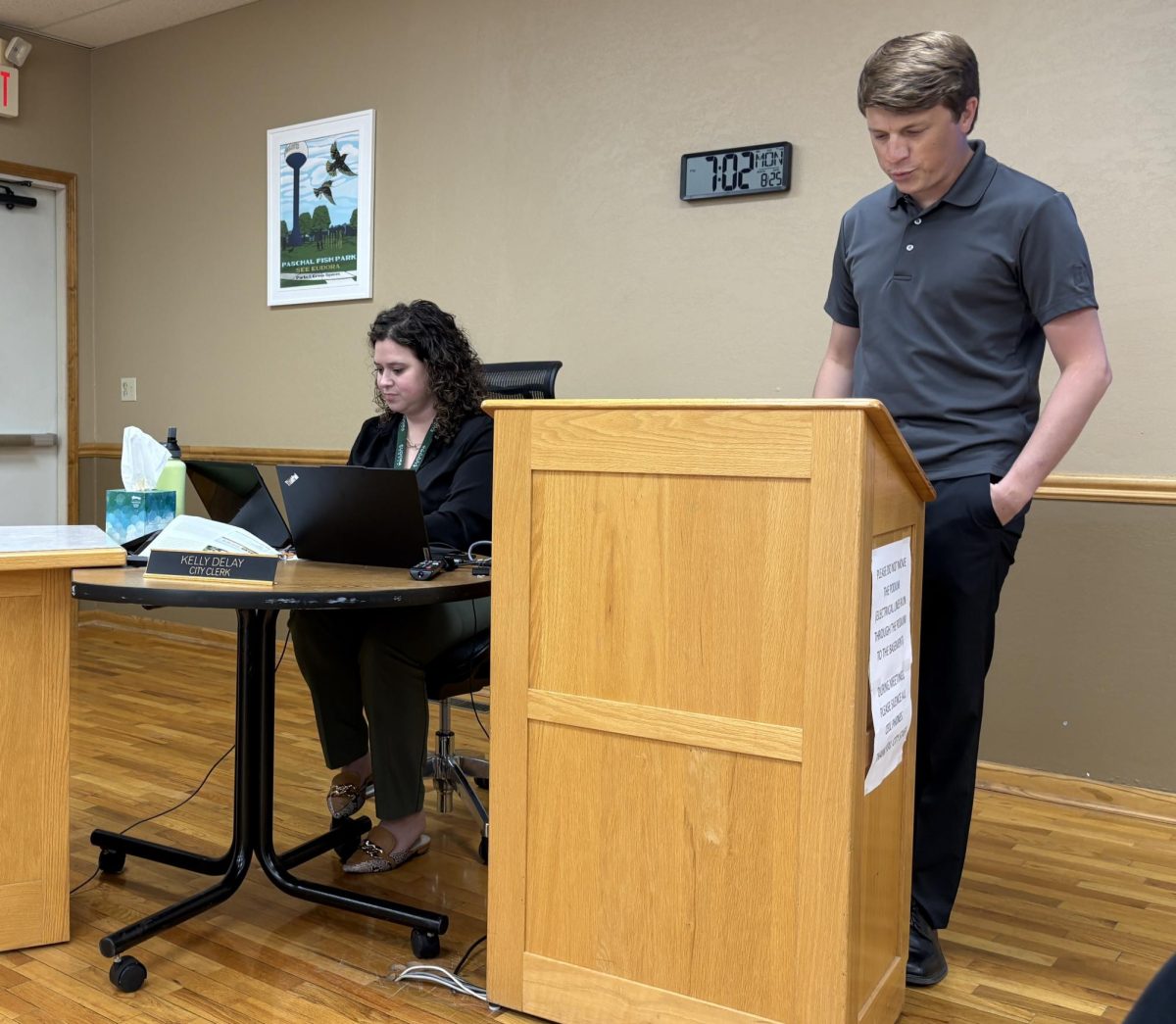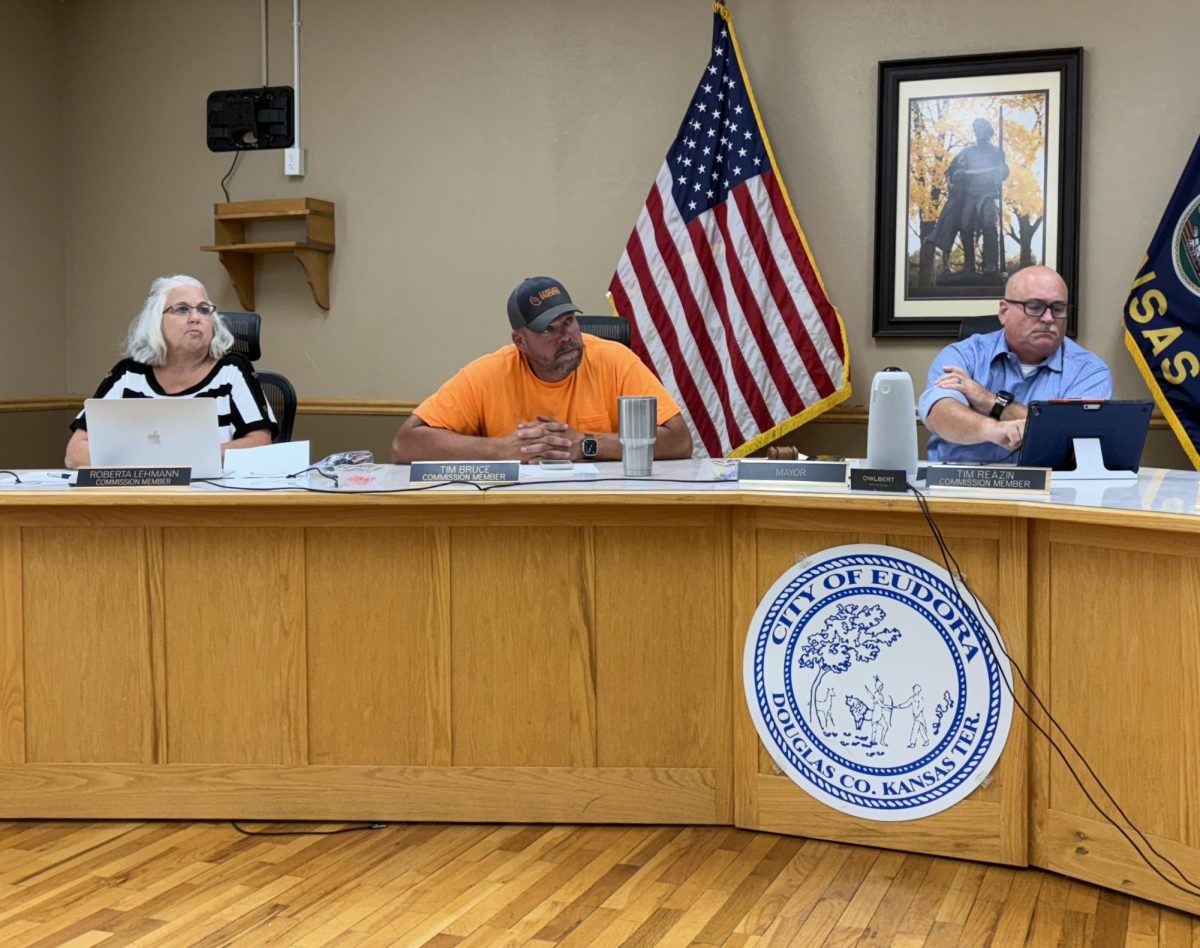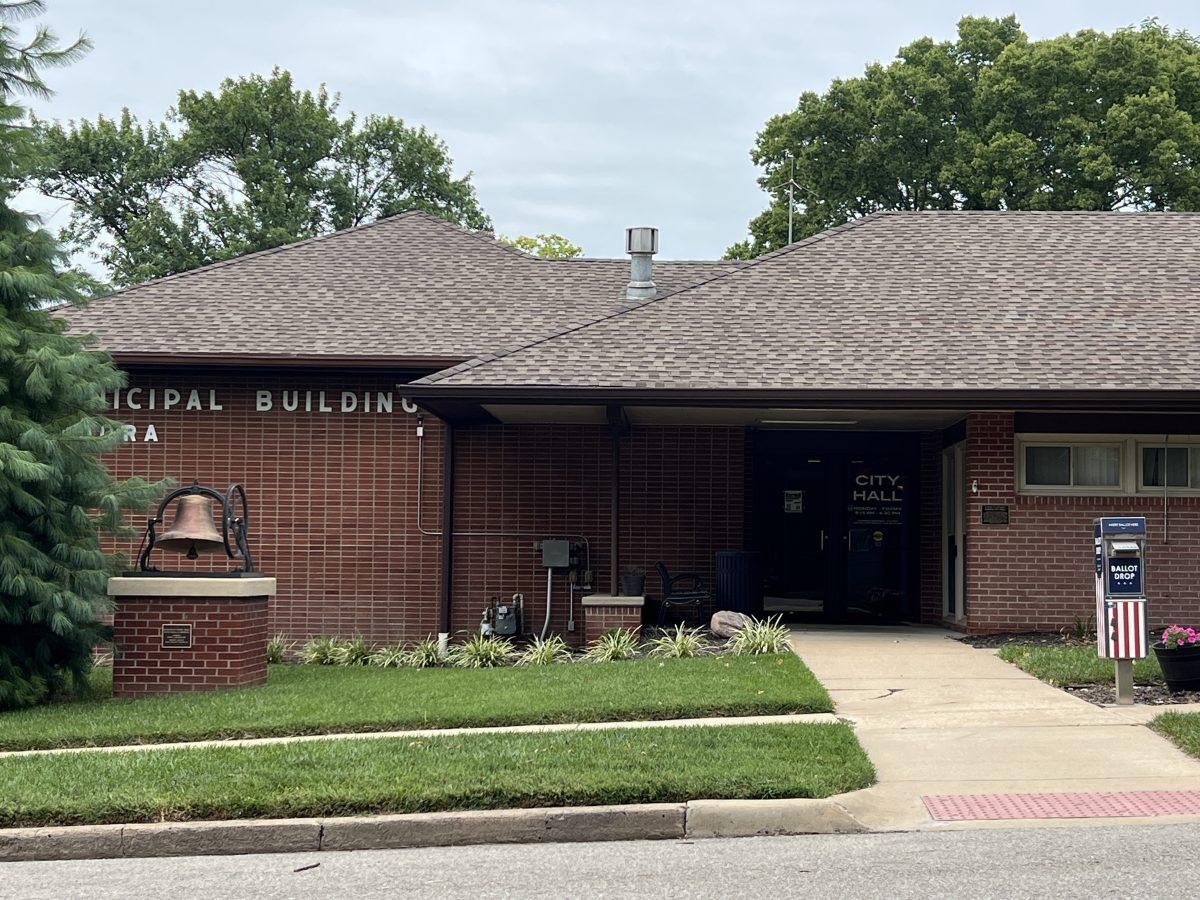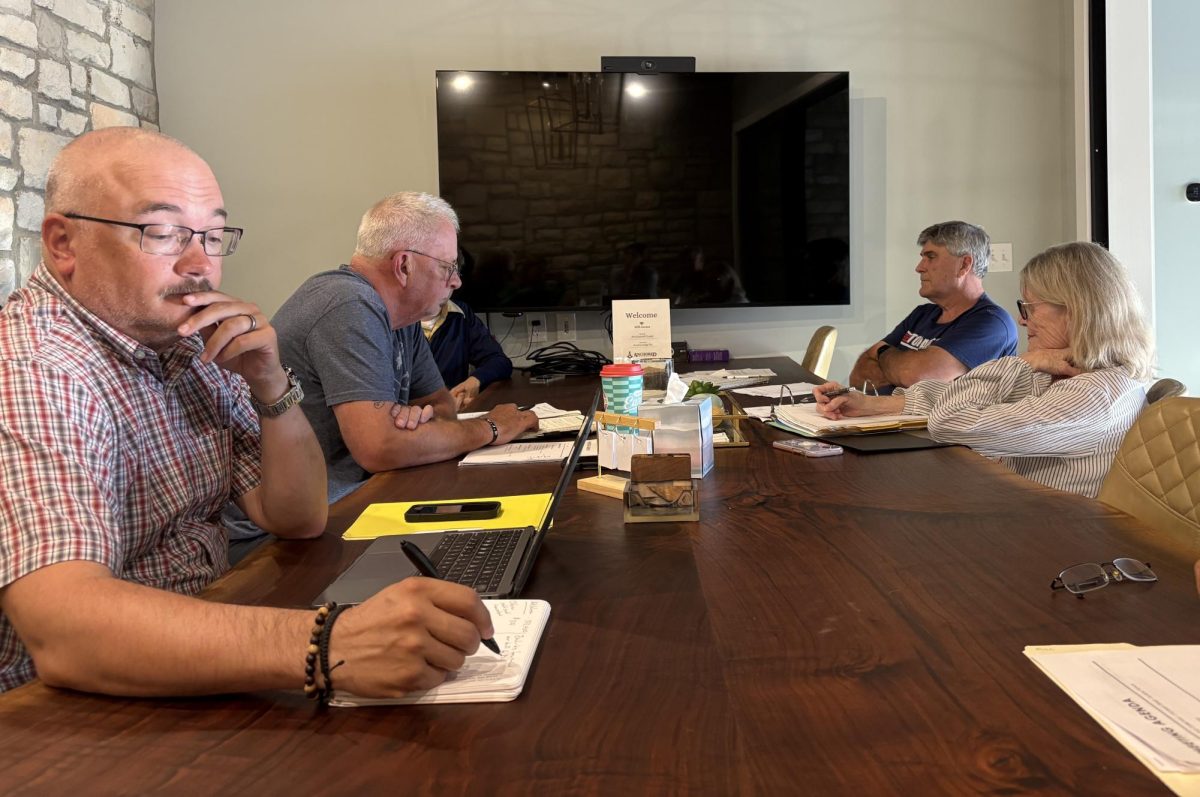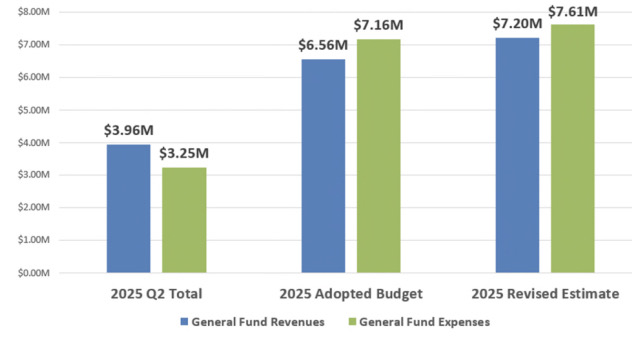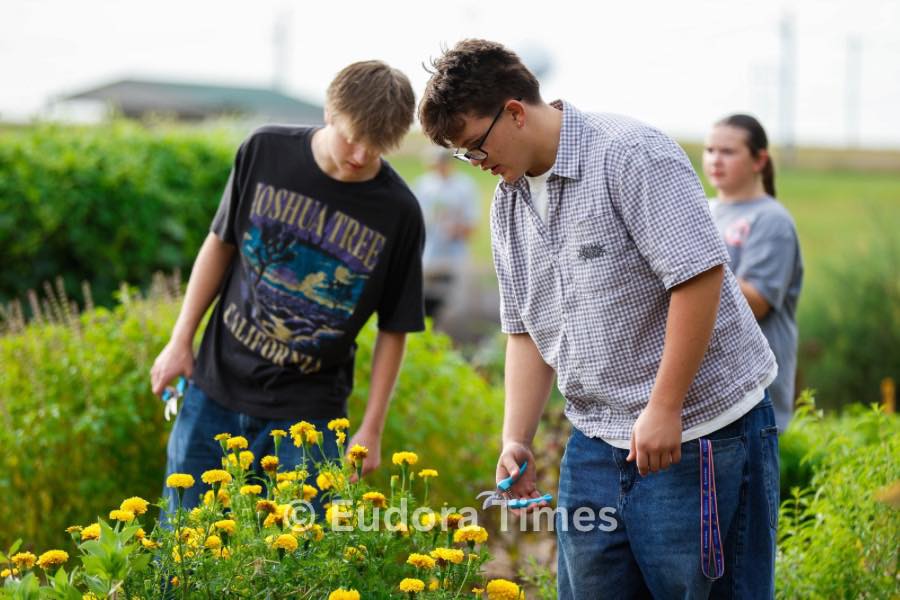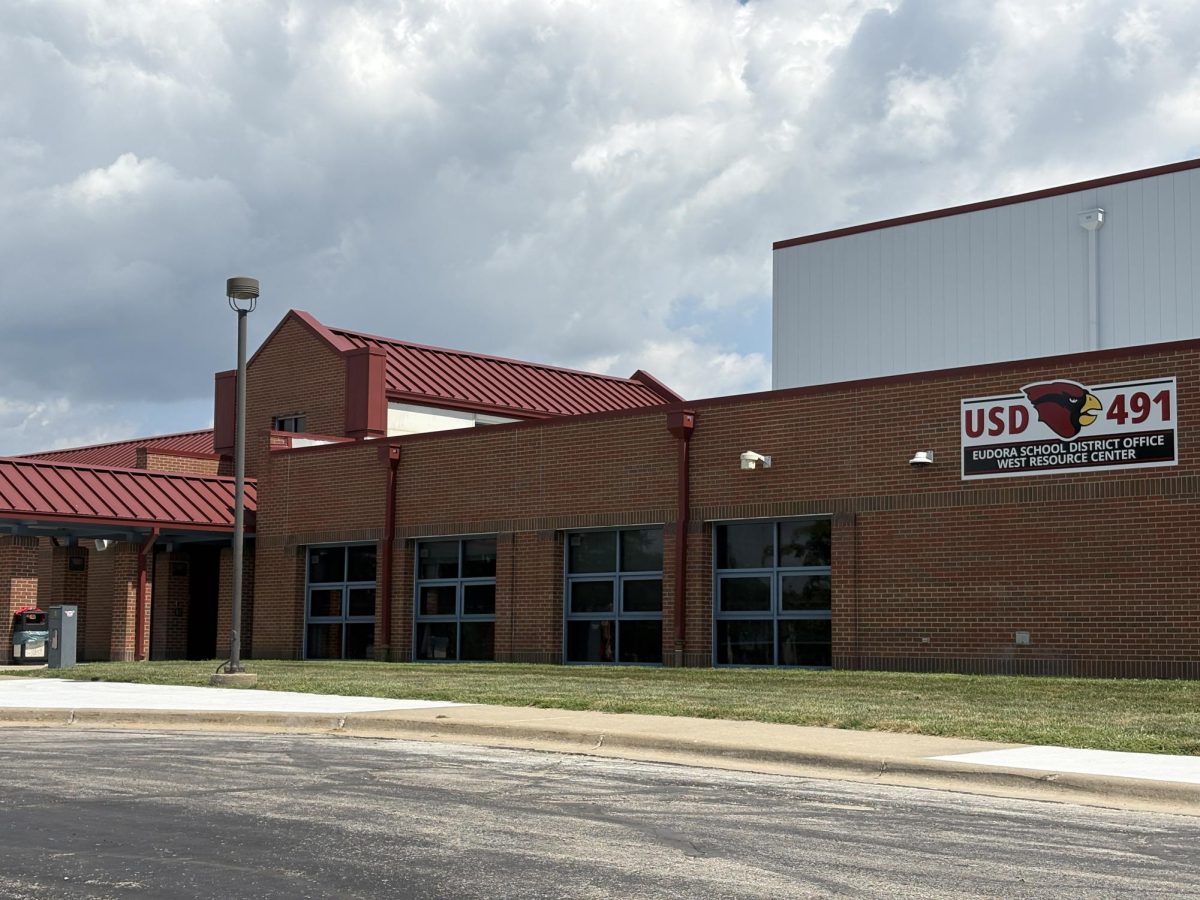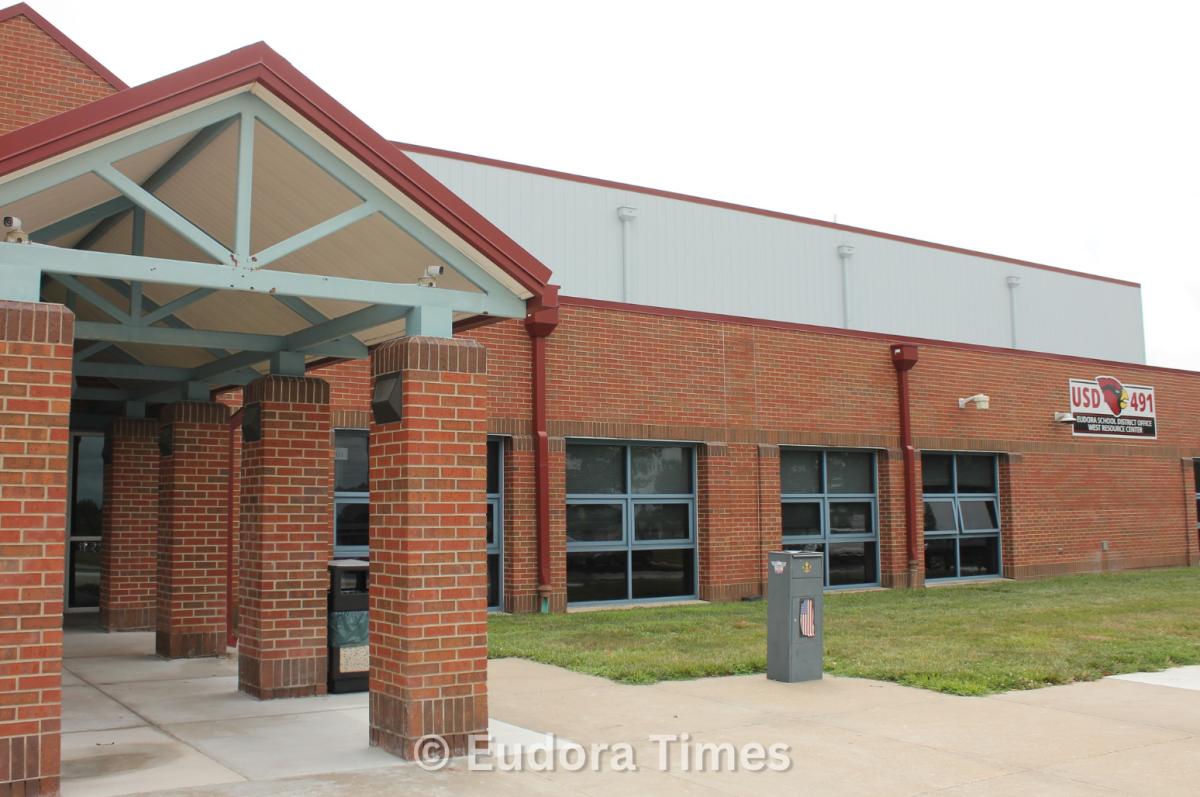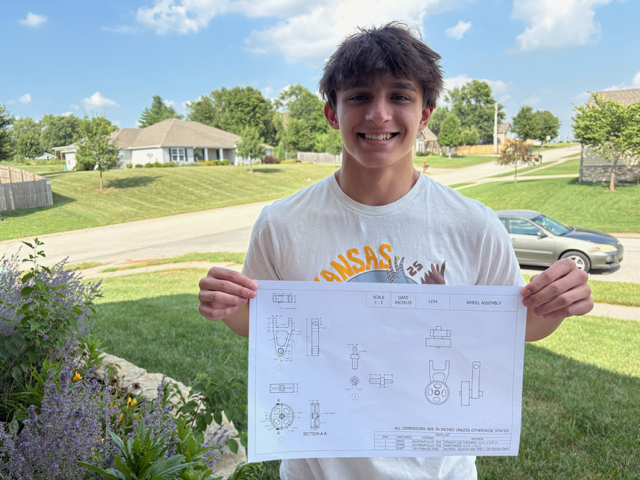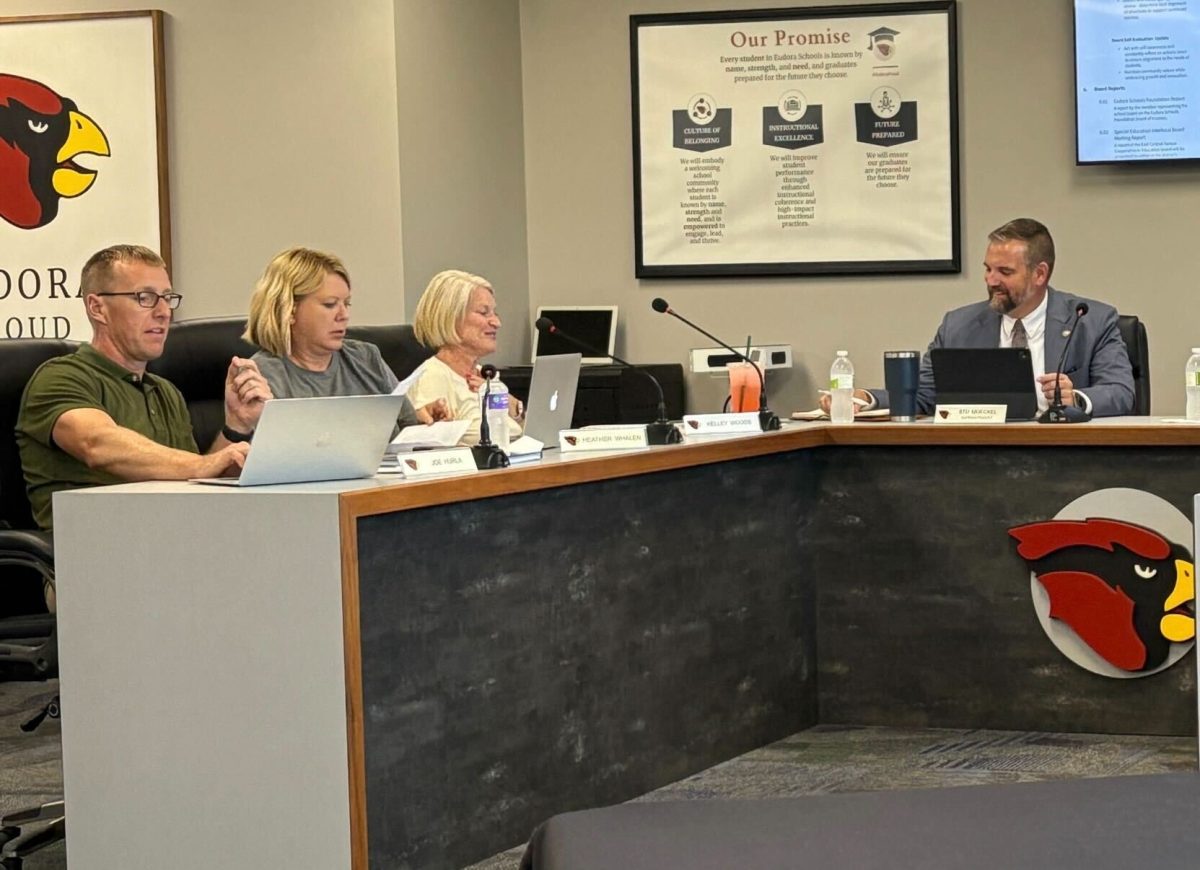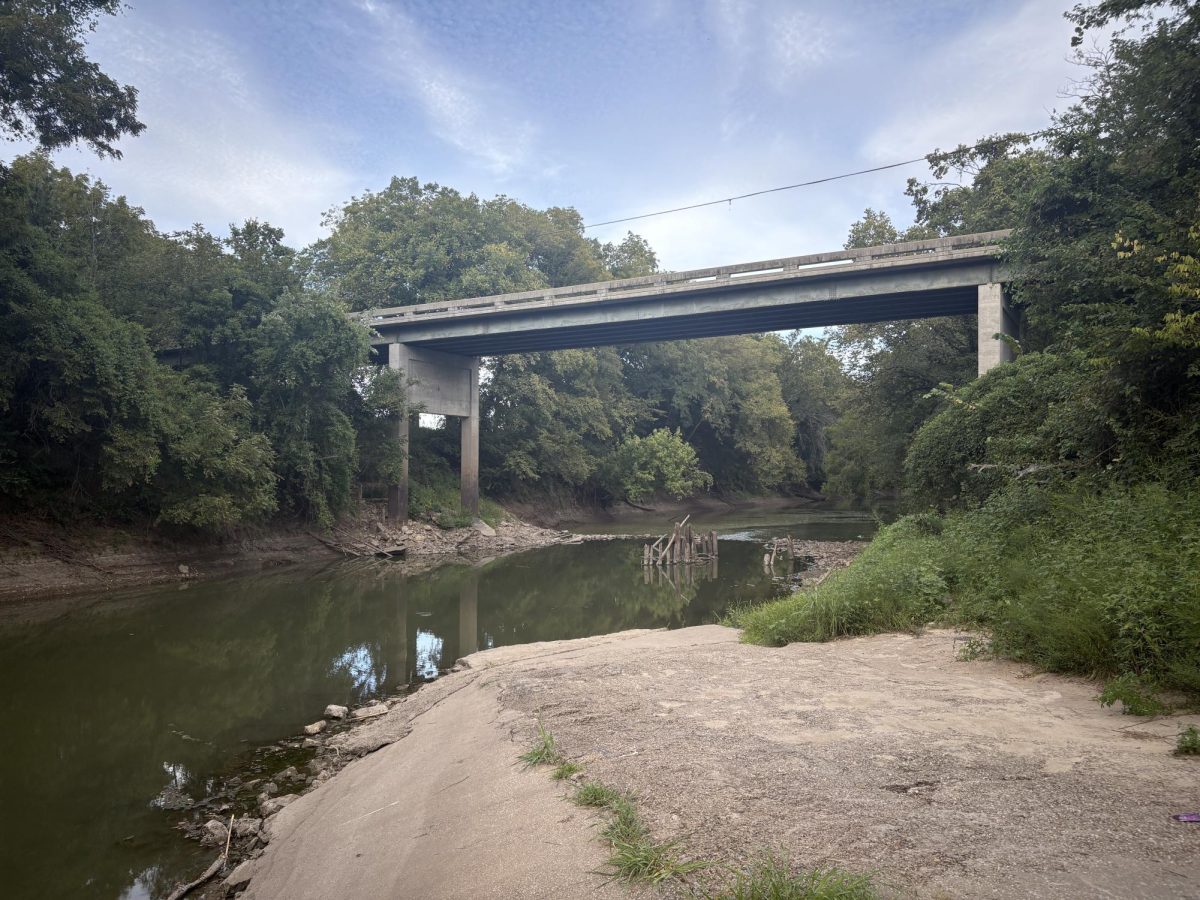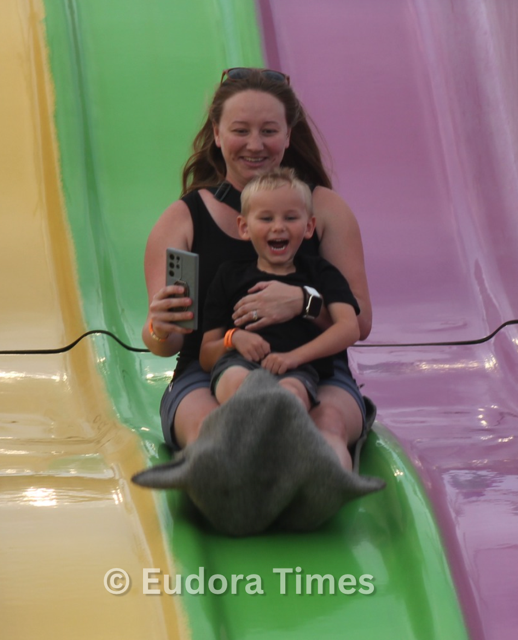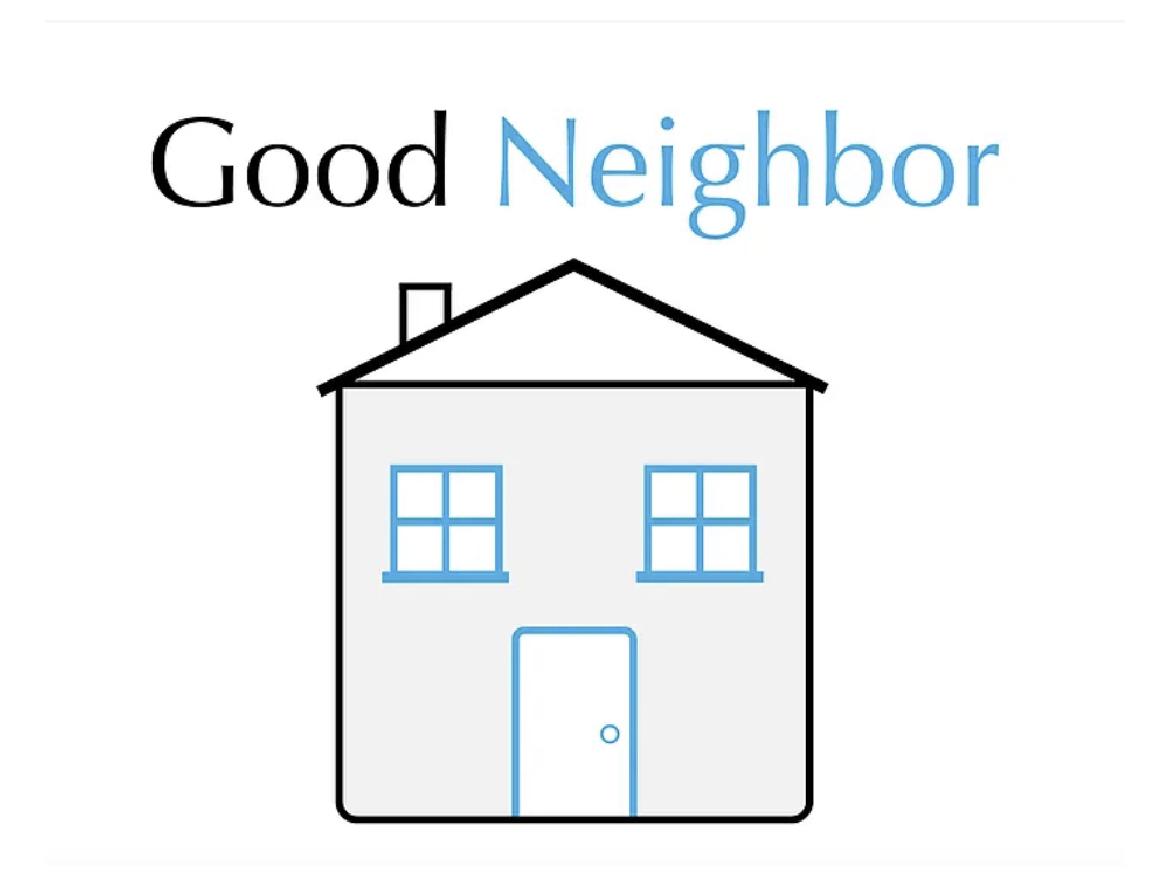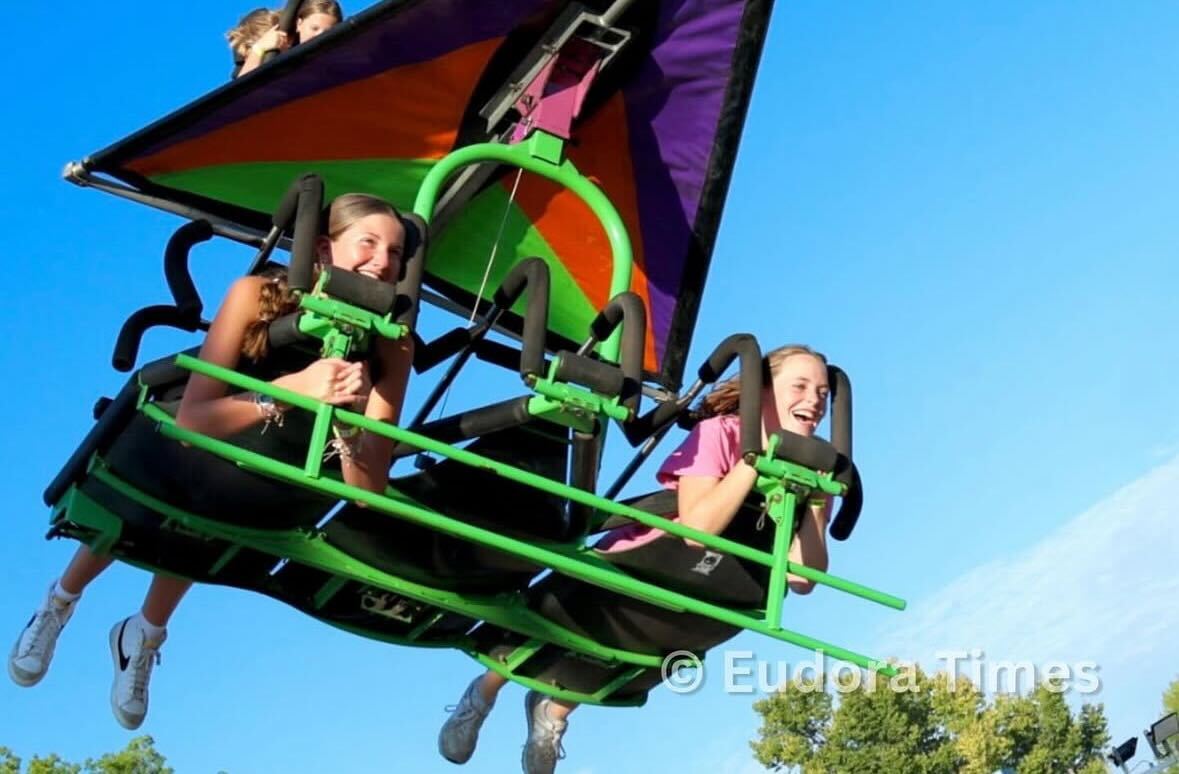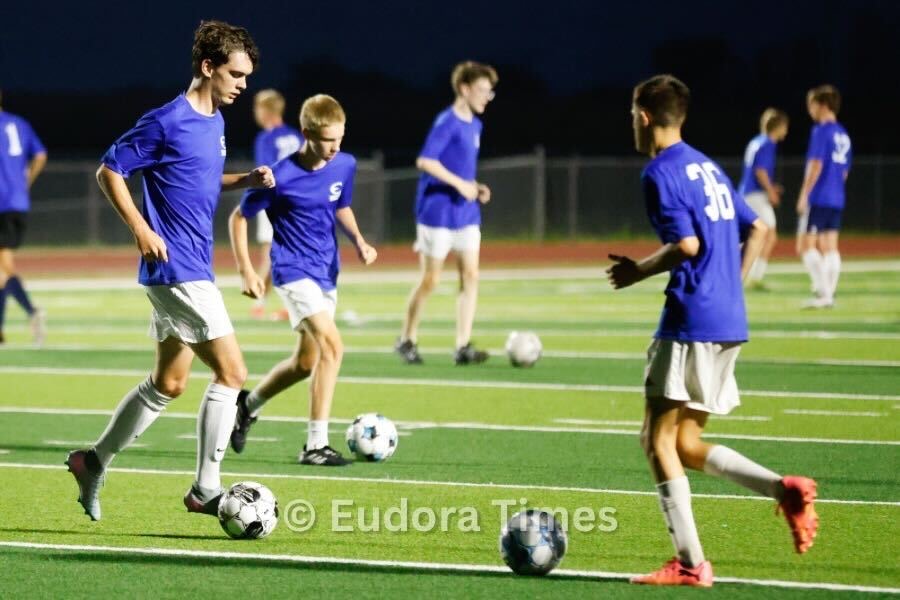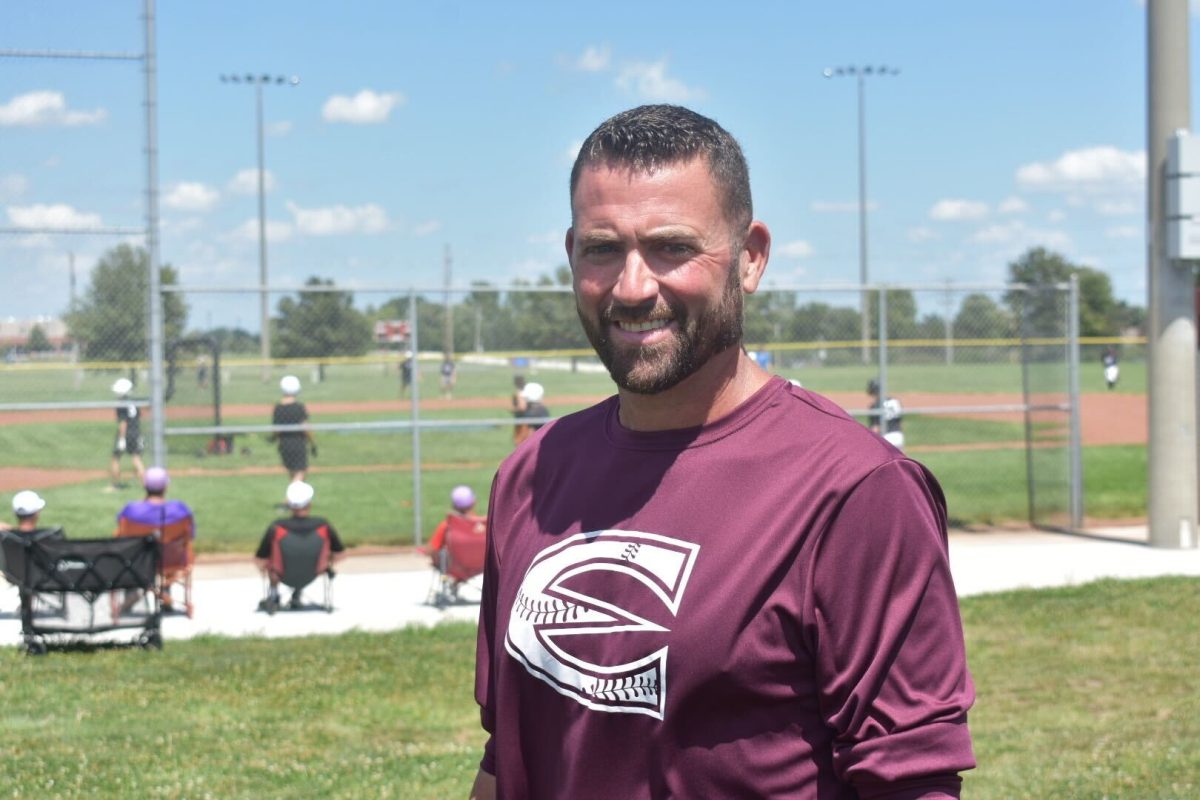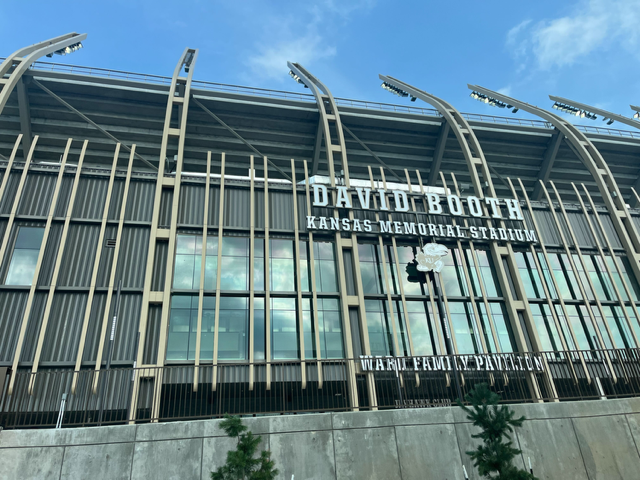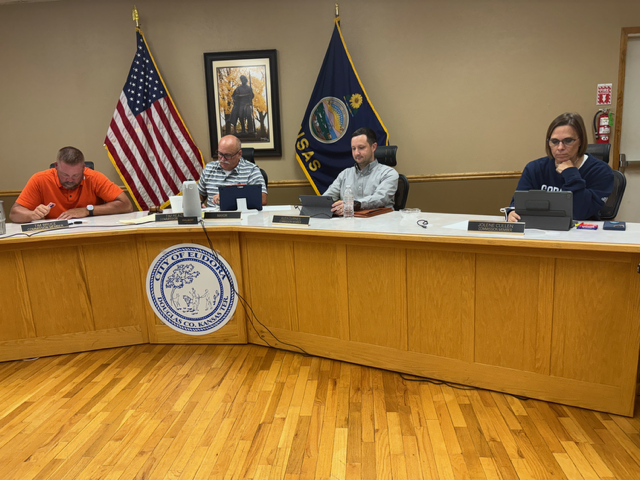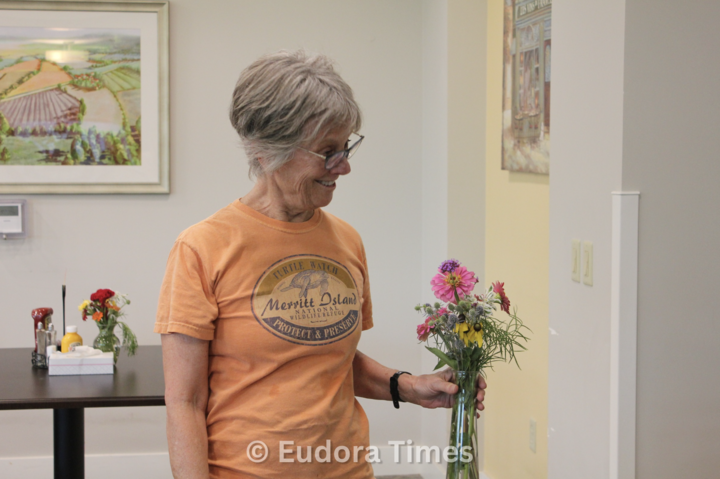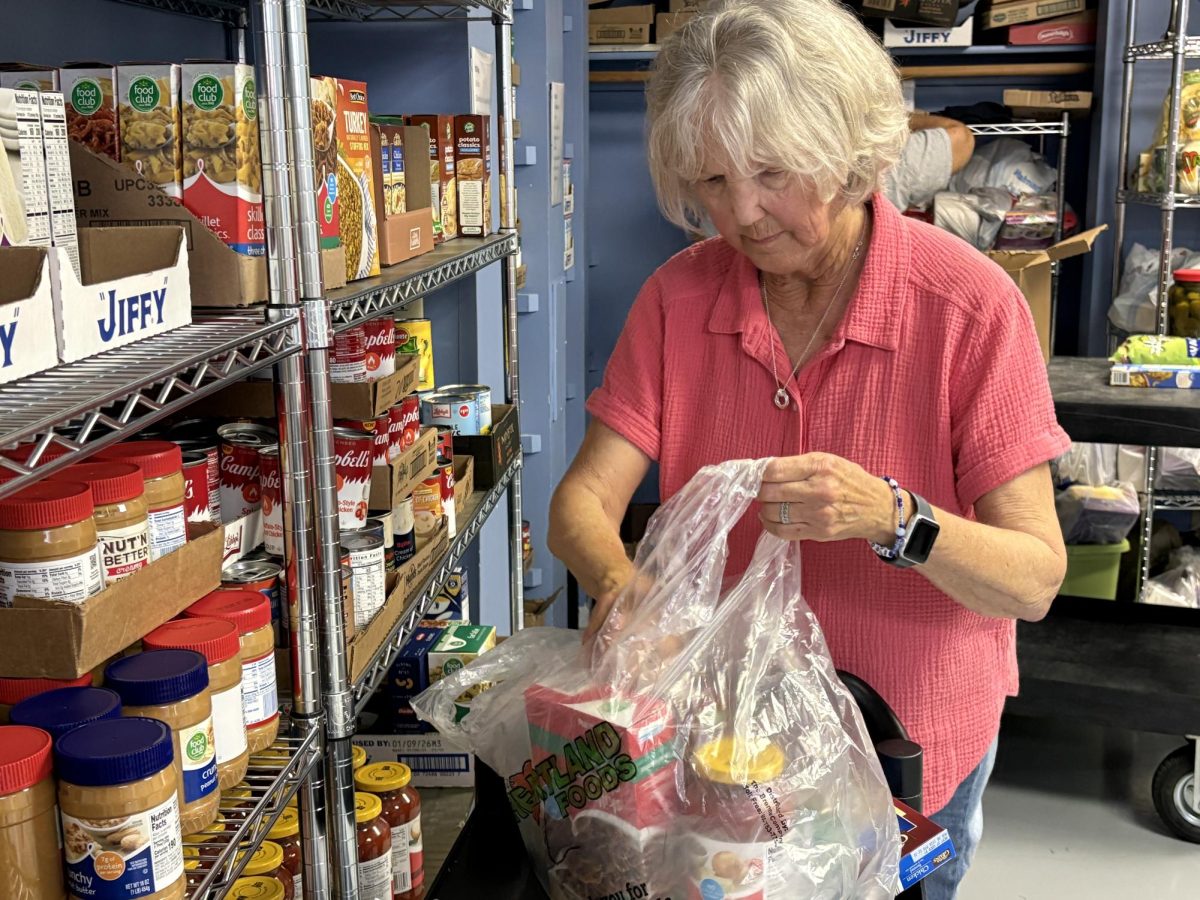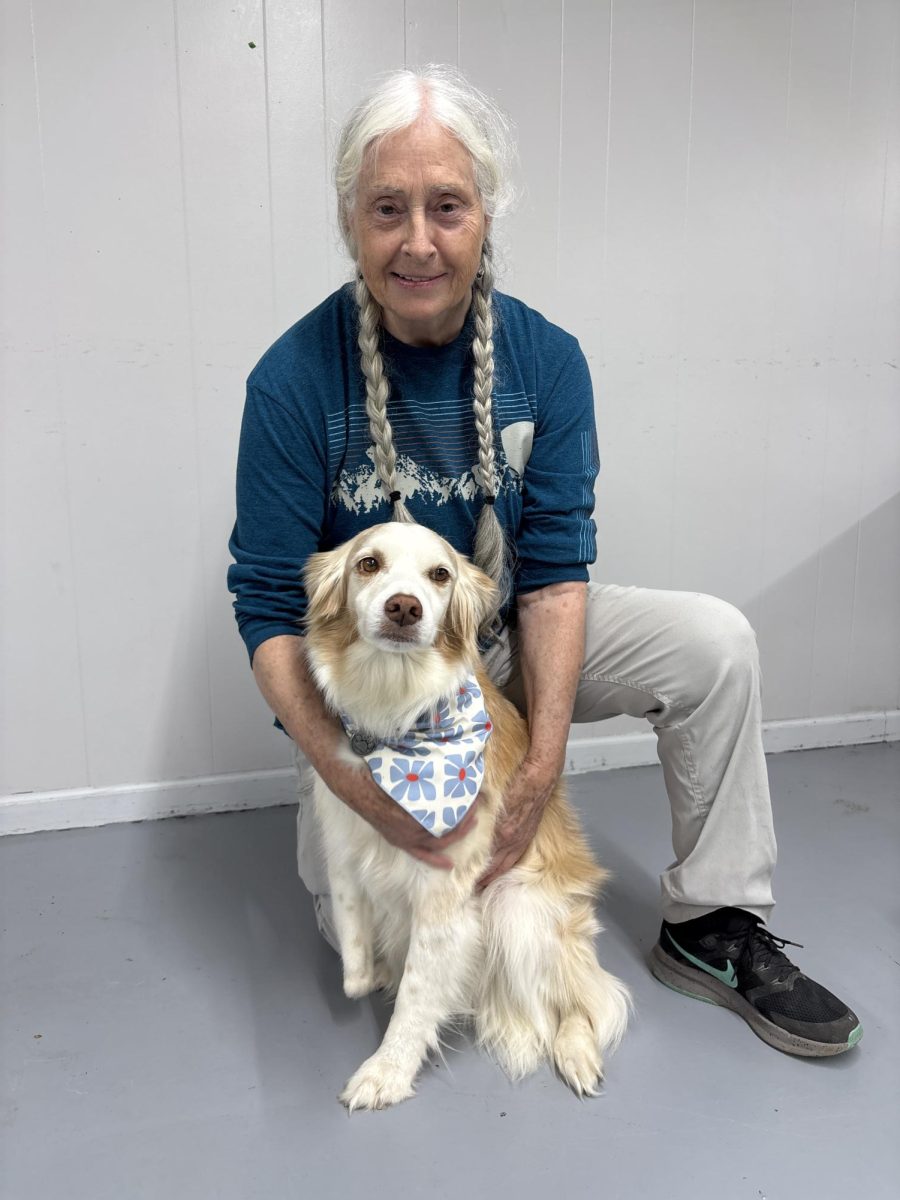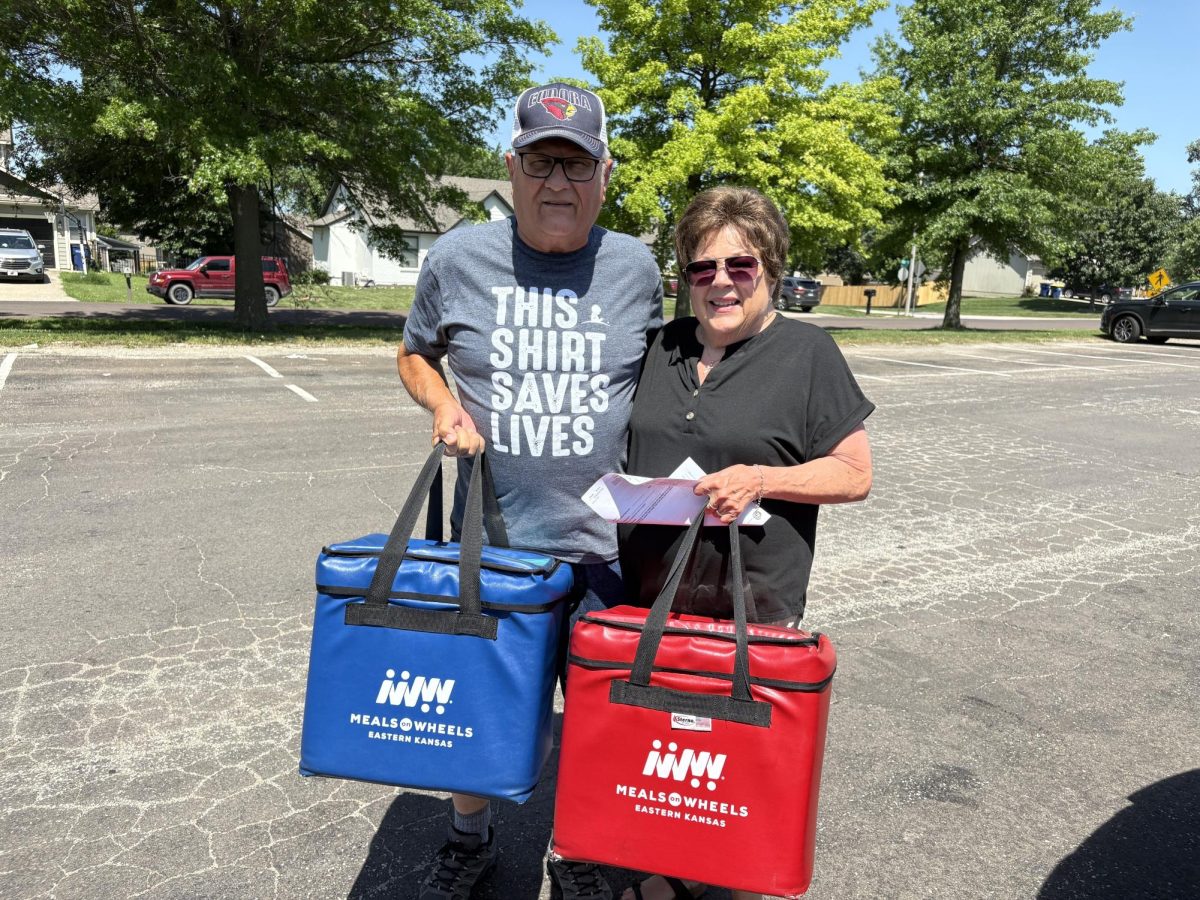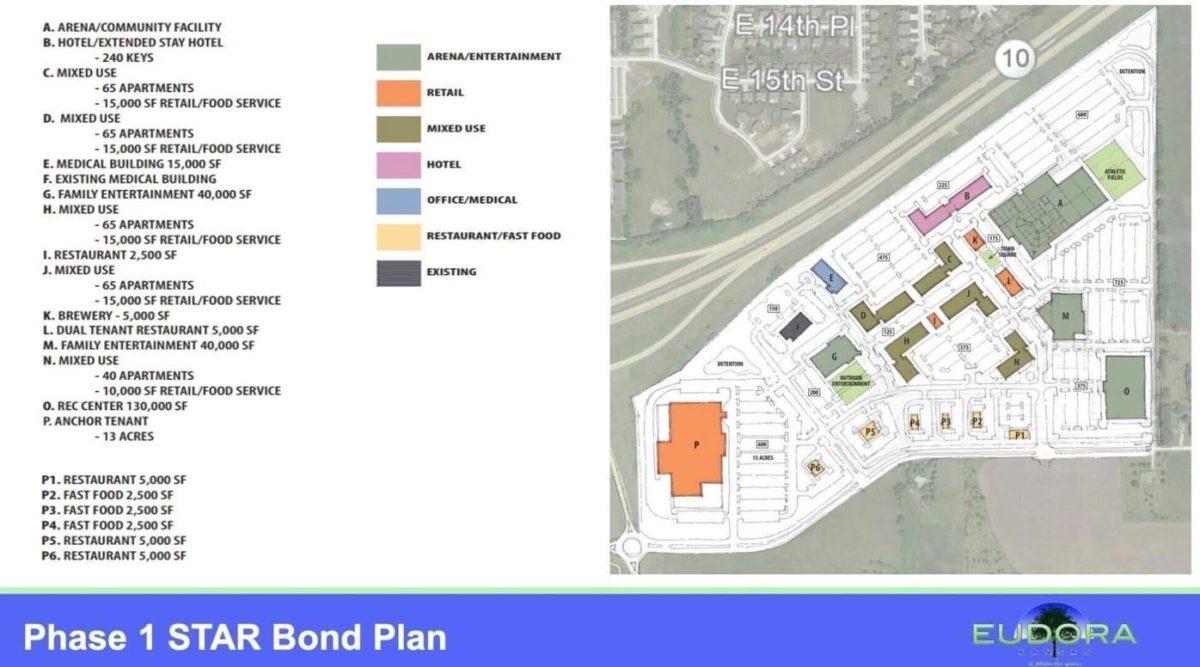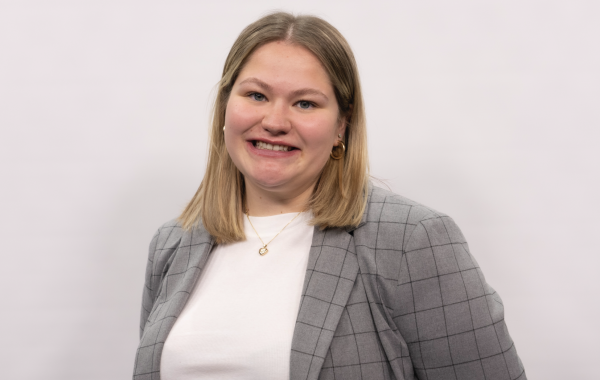City officials think a proposed sports and entertainment complex is a promising idea to bring new tax dollars into the area and are still moving forward with plans for it.
A presentation to the city in fall 2022 described construction of a proposed $40 million arena that could hold up to 5,000 people, along with the development of retail spaces, restaurants, apartments, a brewery and a hotel surrounding it in the area south of K-10.
Proposed events for the arena included basketball and volleyball tournaments, MMA events, concerts and theater performances. City commissioners were told an arena could attract over 500,000 unique visitors a year, with an average visitor coming from anywhere within four hours of Eudora.
Since then, the city has annexed land it hopes to use for the district, and is under a land option agreement with the property owners.
One of the tactics the city has discussed using to pay for the development is STAR bonds or Sales Tax and Revenue bonds, which are used for the expansion of entertainment and tourism.
The bonds are paid off through the sales tax generated. The state hopes these projects increase visitation to Kansas.
In late 2023, an Overland Park development defaulted on nearly $65 million in STAR bonds.
Therefore, The Eudora Times recently sat down with City Manager Kevyn Gero and Assistant City Manager Zach Daniel to get an update on the Eudora project.
During the interview, Gero said the city is exploring more options than STAR bonds and is still moving forward with the development. Below is a lightly edited Q&A about the project and economic development in the city.
Q. What are the goals for next steps for the rest of this year?
Daniel: There’s these economic development initiatives that are out there and tools that are out there that we’ve already used before, like TIF [tax increment financing] or CID [community investment district], and so the project that has been conceptualized – the state thinks it’s a good project, every indication that they’ve given us that they — it hits their tourism buckets that they want to see the STAR Bond initiative accomplish.
Where we’re at right now is, we can get to that endpoint using a number of different avenues to get there. STAR satisfies a lot of those things that we want for the district, but depending on how it’s ultimately structured, TIF could get there, community improvement district could get there, and so what we’re doing right now is really taking that holistic approach of making sure that we’re covering all our bases and not leaving any kind of potential option on the table and not being so tunnel focused on STAR when other options might also be there.
Not to say the STAR is not a good one because everybody thinks it’s a good one, but just making sure we’re doing our due diligence to the staff so the commission is making those good, informed decisions.
I don’t want to attach a firm timeline because really what we’re doing right now is that financial feasibility piece of it, just making sure we’ve got all our ducks in a row. And then as staff, we’ve got a clear-eyed picture that we can communicate to the commission and to the public.
Like, here’s the implications of this path or that path. And depending on how that shakes out, that’s gonna kind of affect that time.
Q. How much has the city spent on the project so far?
Daniel: Since 2022, the city has spent about $500,000 towards the economic development project south of the highway. This has included cost for consultants, various financial analysis, legal services, land options, etc.
Only 17% of this total, or about $90,000, has come from the city’s general fund. The rest is made up of a combination of federal ARPA [American Rescue Plan] money and CIP [capital improvement programs] sales tax funds reserved for capital improvements in the city, of which there will be many to support a new commercial district south of K-10.
One more note for context, the $90,000 of general fund money came from a one-time transfer made in 2022. Total audited expenditure that year was $5.1 million in the general fund.
This means the $90,000 represents only 1.8% of the general fund budget that year. Staff has been very mindful to minimize impacts to operations as we continue to explore this project, as evidenced by our funding methods to this point.
Q. The Prairiefire development in Overland Park defaulted on nearly $65 million in STAR bonds. What impact has this had on your own thinking for the Eudora project?
Gero: The time that Prairiefire was approved was before the new statutes related to the visitation requirements. When we do the feasibility analysis, it is through the state. It is from a list of their selected contractors. Before, it was really the applicant did their own feasibility analysis.
Daniel: They wanted to maintain more control over that process and – through that – have set kind of higher thresholds for STAR bond applicants to prove up. So whereas the Overland Park project might have been on a previous iteration of the STAR, everything that we’ve been doing is just kind of meeting those higher thresholds that satisfy the state that that project is feasible and is going to generate the amount of tourism and visitation that it needs.
Q. If it couldn’t work in Overland Park, how do you think this can be successful here?
Gero: I didn’t look at the structure of the Prairiefire funds and obviously it’s a successful retail area, but we are looking really more conservatively on the feasibility analysis to make sure we hit those because we are a small town.
This is a significant economic development project for us, so there’s a greater need to step into a project of this scale with intense scrutiny.
Q. What are the visitation requirements for the STAR bonds?
Gero: So I think with the new thresholds, you know, I’m assuming that the state now feels more comfortable that we will not have situations like what happened in Prairiefire because that structure is now in place to prevent that situation from happening.
Editor’s Note: According to the Kansas STAR bond visitation requirements, out-of-state visitation from multiple states should make up about 20% of visitation of the attraction. About 30% of the total annual visitation should be drawn from greater than 100 miles away. The total annual visitation should also compare to existing attractions in the state, as well as comparable attractions and markets in other places.
Q. What would be the impacts for the city if Eudora also defaulted?
Daniel: It’s a little hard to answer the question because the bonding structure has not been finalized. So it’s hard to say like if a default were to happen, then the result is X.
And because we’re not really at the point where we’ve structured how that would [be], you know, and presented that to the commission for some level of review, it’s hard to say that a certain action will happen or will not happen.
I think, broadly speaking, if the project were to default and then some entity, whether that’s the city or some private partner, may have some level of involvement in making sure that from a financial perspective, everything gets brought back above board – it’s just hard to say at this point, at this stage in the process, what exactly those impacts might be.
I think this point of where we’re at right now is looking out ahead to see what are the steps that staff and the commission can do to, as much as we control, minimize those impacts to the rest of the community and internal city operations.
So that’s kind of where we’re at now is making sure that, you know, in light of Overland Park’s project defaulting, whatever issues that other STAR bonds might have is kind of take the lessons from that and make sure that, again, we’re just minimizing the potential impacts of what that is.
To that end, though, we’re not going to present a project that we’re not confident in in its viability.
Q. The city has already seen struggles filling the Nottingham development so what different strategies would be used to get businesses to want to come to be part of the sports and entertainment complex?
Gero: High Five [the bowling alley complex] not coming in is disappointing. I think the community is still feeling disappointed.
With other excitement in the region, it’s promising that Nottingham will continue to be attractive, and our new broker will help us find the right fit.
Daniel: There’s a high level of intention from our commission that we’re not just filling it to fill it. It’s got to be something that works within that district and is also complementary in the stuff that we’ve got in other places in town.
So we don’t want to have a direct negative impact on our historic downtown, and we don’t want to attract something in the STAR bond district that’s going to have a direct negative impact on the Nottingham district, so there’s these kind of, like, tiers of economic development.
We want to make sure that we’re servicing the needs of the community and take advantage of everything else going on in the region, and is a kind of a net positive for all the parties involved.
Q. One of the goals of this type of sports/entertainment district is to bring tourism. How will the city make sure that goal is met?
Gero: The programming of the sports entertainment venue is designed in a way to maximize the programming so that we meet that threshold.
As part of the feasibility study, we’ll look at how do we also maximize the amount of retail there so in order to kind of meet the sales tax needed that we will need outside visitation because the project is not supported through local visitation alone and we need the retail sales to pay back the bonds.
Q. After speaking to an auditor from the last STAR Bond audit in 2021, he detailed that it seemed like the most unique bond districts seem to perform the best. How will the city stand out with this project?
Gero: So we have been really intentional with working with Commerce and Tourism, since it is mutually beneficial for the state in that aspect. They are aware of needs, statewide needs, related to tourism more so than we might be at the local level, so designing the programming to match that in a unique way has been very top of mind for us.
One example is the MMA [mixed martial arts] kind of events that we may have mentioned in the past. The unique factor is that it will be very dynamic and able to support lots of different needs in the state, which doesn’t really exist right now.
Q. Tell me more about the MMA concept.
Gero: The state expressed to us that there wasn’t a venue that met the needs of folks that wanted to host MMA tournaments. In our space, the adaptability is the unique part, the adaptability of the venue, but also how close it will be to other retail offerings.
If you think about other sports and entertainment venues that will be peer to this or competitors, many of them are not as close to retail, especially family entertainment.
Daniel: It’s easier for a visiting family whose daughter is in a volleyball tournament to spend their money at a restaurant or another family entertainment center that’s within walking distance than it is to hop in the car and drive to a different community to go do that. We can capture that out-of-town revenue through really thoughtful design of the area.
So it’s, I mean, that’s another big component of it: it’s not just enter an arena and then stuff kind of springs up around it.
We wanted to design it to maximize retention of sales tax dollars and where the retail complements the venue and the venue complements the retail.
Q. Several residents and businesses are located near the proposed district. What impact will the district have on them? Will their properties be affected?
Gero: The RAISE grant will kind of change the infrastructure in that area. I think an additional benefit of the RAISE grant is that it will allow us to support development a little better in that neighborhood versus the way it’s structured right now.
I think the RAISE grant will mitigate some of those impacts of adding commercial and retail, but there is, beyond the RAISE grant, there’s additional work to to design something that’s going to kind of support both residential and retail.
Editor’s Note: The city received a grant from the federal government to help improve the road from 20th Street to 28th Street. The grant is expected to convert the two-lane road to a three-lane road to give drivers a turning lane, as well as add a traffic management device like a roundabout near Church Street and 20th Street. The city is continuing to work on plans for the road improvements.
Q. Overall, why do you think this is still the right strategy for Eudora to pursue?
Daniel: Diversifying the tax base – that’s been a sticking point for our commissioners. In as much as you can accomplish that, that’s good budgetary practice to diversify that, and so because this project, as conceptualized, gets us there, and the state had buy-in for it and seems to think it’s a good idea, and it serves a need and it captures this other kind of potentially unmet need – again, it just ticks a lot of boxes to go to the financial benefit of the city.
Q. Are there other economic development initiatives the city is exploring right now?
Gero: I think one thing that will be on the commission’s radar, as we look at our comprehensive plan and potential updates, is continuing conversations about our urban growth area and whether that needs to be updated because we will continue to receive interest in industrial space.
We are not meeting the needs of industrial space to support Panasonic or the Flint development and as those areas close to us continue to grow with industry, we will continue to get phone calls and that will be something on the horizon.
What further questions do you have for city officials about economic development in the area? Email us at [email protected].
